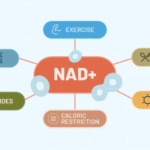1. Introduction to Hyperkalemia
Hyperkalemia is a condition characterized by elevated potassium levels in the blood, which can have significant effects on cardiac function. Recognizing ECG changes associated with hyperkalemia is crucial for prompt diagnosis and treatment.
2. Importance of ECG Monitoring
ECG monitoring is essential in assessing cardiac function and identifying abnormalities, including those indicative of hyperkalemia. Understanding mnemonic devices can aid in recognizing specific ECG changes associated with hyperkalemia.
3. Mnemonic Devices
Mnemonic devices are memory aids that help individuals recall information. In the case of hyperkalemia ECG changes, mnemonic devices can assist healthcare providers in quickly identifying characteristic patterns on the ECG.
4. “MURDER” Mnemonic
One commonly used mnemonic for hyperkalemia ECG changes is “MURDER,” which stands for:
– M: Peaked T waves
– U: Prolonged PR interval
– R: QRS widening
– D: Decreased P wave amplitude
– E: Absent P waves
– R: Sine wave pattern
5. Peaked T Waves
Elevated potassium levels can lead to prominent, symmetrically peaked T waves on the ECG. These tall, pointed T waves are a classic sign of hyperkalemia and may indicate impending cardiac complications.
6. Prolonged PR Interval
Hyperkalemia can prolong the PR interval, which reflects the time it takes for electrical impulses to travel from the atria to the ventricles. A prolonged PR interval may result in delayed ventricular depolarization and impaired cardiac conduction.
7. QRS Widening
As potassium levels rise, the duration of the QRS complex on the ECG may widen. This can indicate delayed ventricular depolarization and impaired intraventricular conduction, increasing the risk of arrhythmias.
8. Decreased P Wave Amplitude
Hyperkalemia can cause a reduction in the amplitude of P waves on the ECG. This is due to slowed atrial depolarization and may be seen in conjunction with other ECG changes associated with hyperkalemia.
9. Absent P Waves
In severe cases of hyperkalemia, P waves may be completely absent from the ECG. This suggests atrial standstill or severe atrioventricular block, indicating significant cardiac conduction abnormalities.
10. Sine Wave Pattern
A “sine wave” pattern on the ECG is a late and ominous sign of hyperkalemia, indicating severe myocardial dysfunction. This pattern resembles a sine wave and is associated with life-threatening arrhythmias such as ventricular fibrillation.
11. Clinical Implications
Recognizing hyperkalemia ECG changes is critical in clinical practice, as prompt identification allows for timely intervention to prevent cardiac complications. Healthcare providers should be vigilant in monitoring patients at risk for hyperkalemia and interpreting ECG findings accurately.
12. Differential Diagnosis
While hyperkalemia can cause characteristic ECG changes, other conditions may also present with similar abnormalities. Healthcare providers must consider the patient’s clinical context and laboratory findings when interpreting ECG results.
13. Management of Hyperkalemia
Treatment strategies for hyperkalemia aim to lower potassium levels promptly and stabilize cardiac function. This may include administration of medications such as calcium gluconate, insulin, and potassium-lowering agents like diuretics or sodium bicarbonate.
14. Hemodialysis
In severe cases of hyperkalemia refractory to medical management, hemodialysis may be necessary to remove excess potassium from the bloodstream rapidly. Hemodialysis effectively lowers potassium levels and restores normal cardiac function.
15. Prevention Strategies
Preventing hyperkalemia involves identifying and addressing underlying causes such as renal dysfunction, potassium-sparing medications, or excessive potassium intake. Close monitoring of electrolyte levels and appropriate medication adjustments are essential for preventing recurrence.
16. Patient Education
Educating patients at risk for hyperkalemia on dietary restrictions, medication adherence, and signs of electrolyte imbalance is crucial for preventing complications. Patients should be empowered to recognize symptoms and seek medical attention promptly.
17. Interprofessional Collaboration
Effective management of hyperkalemia requires collaboration among healthcare providers, including physicians, nurses, pharmacists, and laboratory staff. Interprofessional communication ensures timely diagnosis, treatment, and follow-up care for patients with hyperkalemia.
18. Research and Innovation
Ongoing research into the pathophysiology and treatment of hyperkalemia continues to inform clinical practice and improve patient outcomes. Innovations in monitoring technology and treatment modalities contribute to advances in hyperkalemia management.
19. Quality Improvement Initiatives
Healthcare organizations implement quality improvement initiatives to standardize hyperkalemia management protocols, enhance provider education, and optimize patient outcomes. These initiatives focus on early recognition, prompt intervention, and follow-up care.
20. Case Studies
Case studies illustrating the clinical presentation, diagnosis, and management of hyperkalemia provide valuable learning opportunities for healthcare professionals. Real-life scenarios highlight the importance of vigilant monitoring and effective treatment strategies.
21. Continuing Education
Continuing education programs and professional development opportunities enable healthcare providers to stay abreast of the latest guidelines and best practices in hyperkalemia management. Lifelong learning is essential for delivering high-quality patient care.
22. Public Awareness Campaigns
Public awareness campaigns raise awareness about the signs, symptoms, and risk factors of hyperkalemia, empowering individuals to take proactive steps to maintain their health. Education initiatives target both patients and healthcare providers to promote early detection and intervention.
23. Global Health Impact
Hyperkalemia affects individuals worldwide and poses significant challenges to healthcare systems globally. Addressing hyperkalemia requires a coordinated effort to improve access to screening, diagnosis, and treatment resources, particularly in underserved communities.
24. Advocacy Efforts
Advocacy efforts aimed at policymakers, healthcare organizations, and industry stakeholders raise awareness about the importance of hyperkalemia management and drive initiatives to improve patient care and outcomes.
25. Conclusion
Hyperkalemia ECG changes mnemonic devices such as “MURDER” provide a systematic approach to recognizing characteristic patterns associated with elevated potassium levels. By understanding these mnemonic devices and their clinical implications, healthcare providers can expedite diagnosis and intervention, ultimately improving patient outcomes and reducing the risk of cardiac complications.














